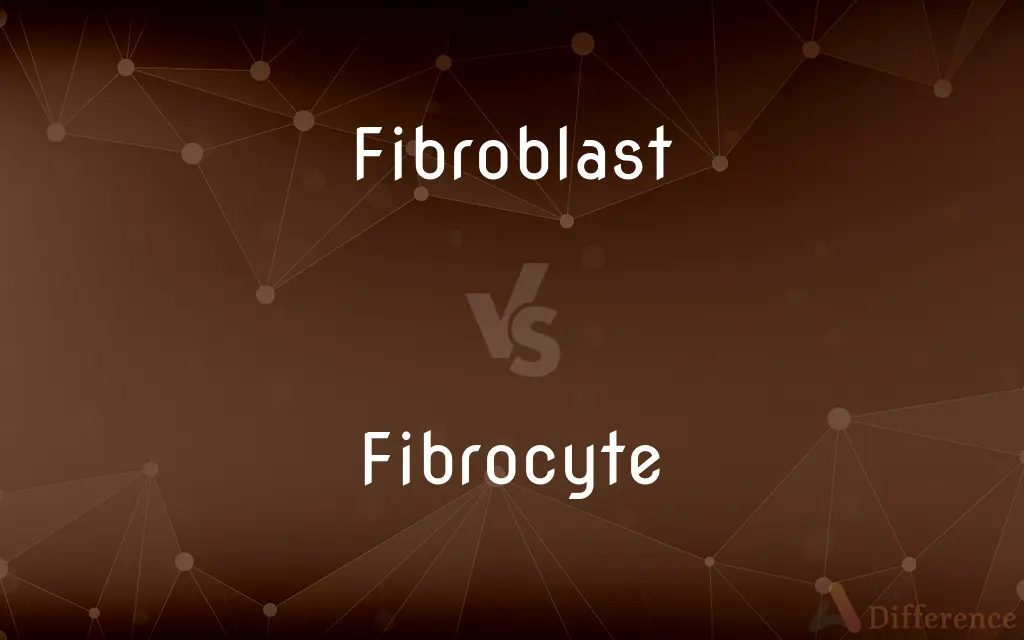Fibroblast vs. Fibrocyte — What's the Difference?

Difference Between Fibroblast and Fibrocyte
ADVERTISEMENT
Compare with Definitions
Fibroblast
A fibroblast is a type of biological cell that synthesizes the extracellular matrix and collagen, produces the structural framework (stroma) for animal tissues, and plays a critical role in wound healing. Fibroblasts are the most common cells of connective tissue in animals.
Fibrocyte
A fibrocyte is an inactive mesenchymal cell, that is, a cell showing minimal cytoplasm, limited amounts of rough endoplasmic reticulum and lacks biochemical evidence of protein synthesis. The term fibrocyte contrasts with the term fibroblast.
Fibroblast
A cell that gives rise to connective tissue.
Fibrocyte
An inactive connective tissue cell that is capable of forming collagen
Fibroblast
A cell found in connective tissue that produces fibers, such as collagen.
ADVERTISEMENT
Fibroblast
A cell from which connective tissue develops
Share Your Discovery

Previous Comparison
Albinism vs. Vitiligo
Next Comparison
Glance vs. Graze













































